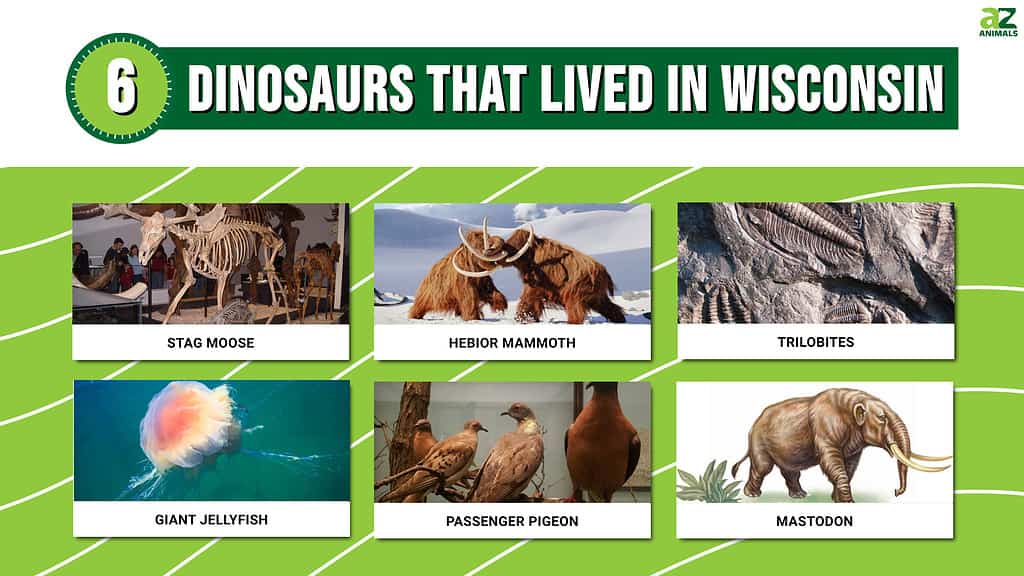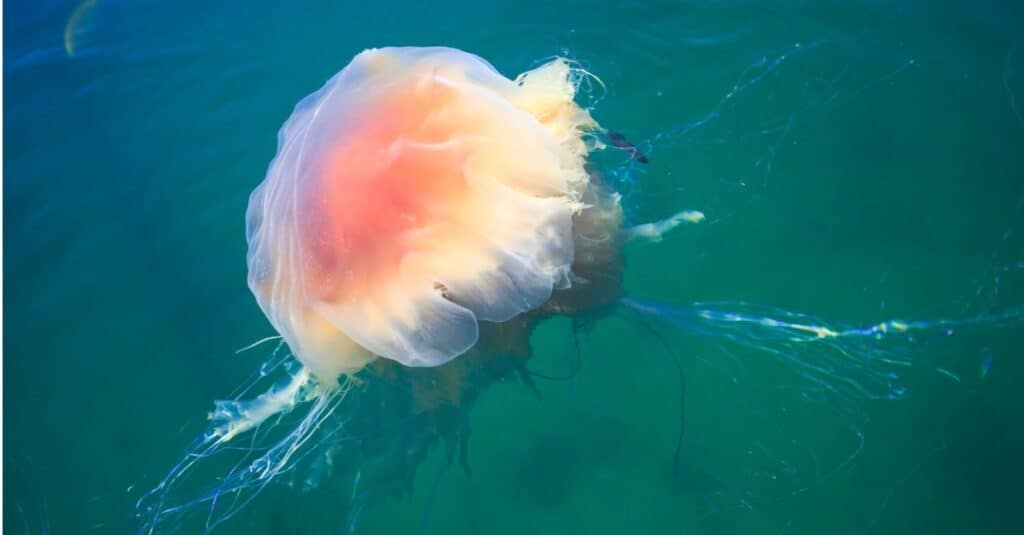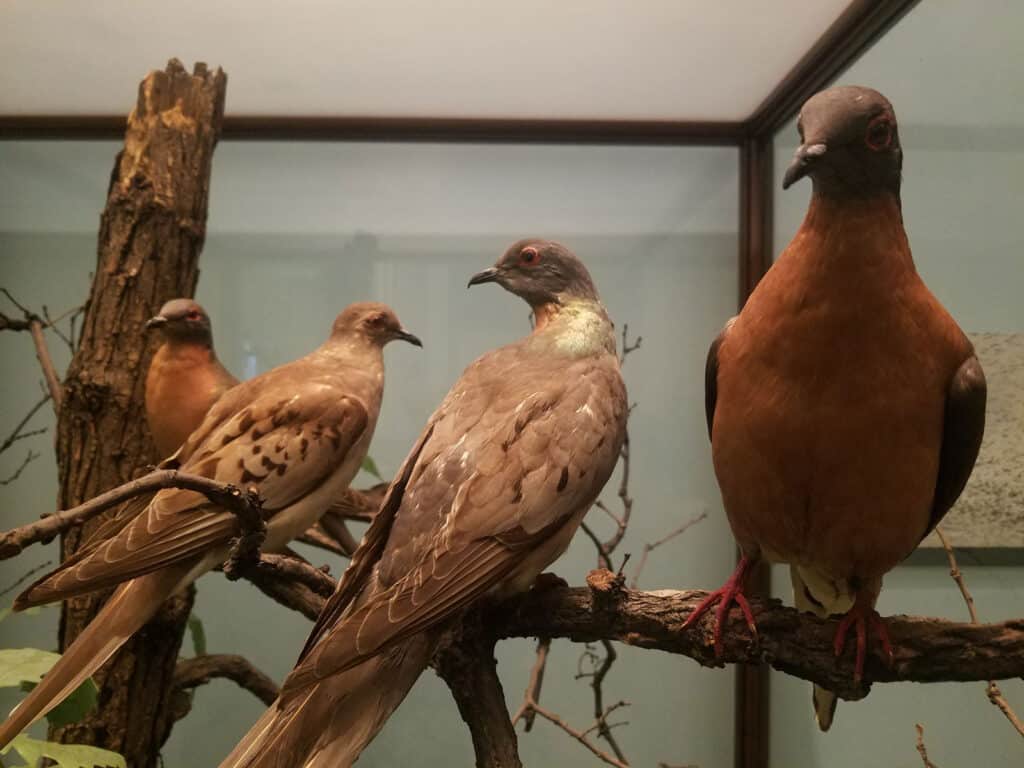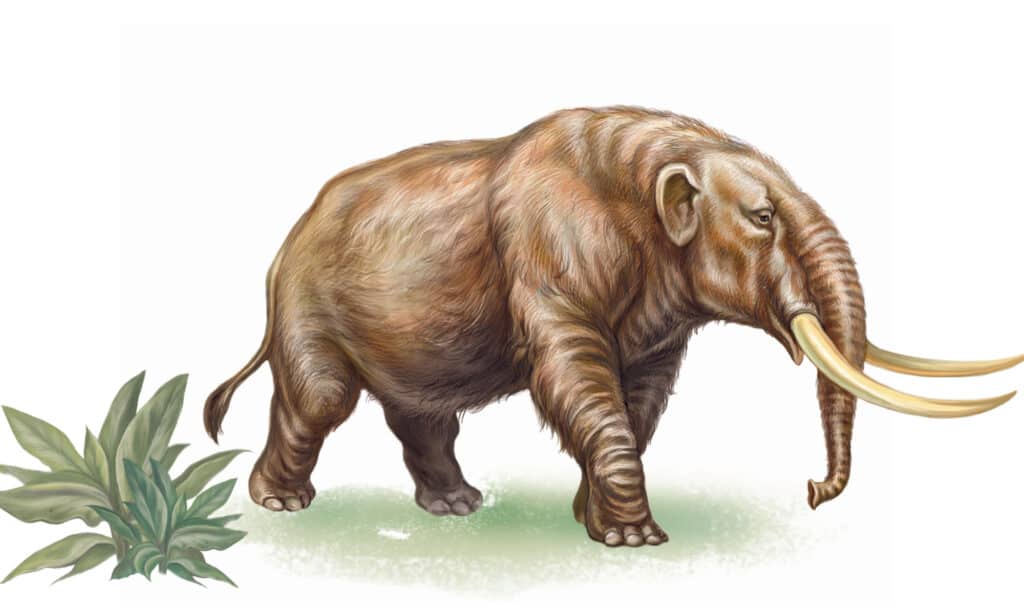Dinosaurs are a fascinating topic for many people, and their remains can be found worldwide. While it is well known that dinosaurs roamed the land that is now the U.S. millions of years ago, including the T-rex and the Brachiosaurus, have you ever wondered if they ever roamed the valleys of Wisconsin?

In this article, we will travel back to the age of dinosaurs and dive into everything related to dinosaurs and other prehistoric creatures in Wisconsin.
Dinosaurs In Wisconsin
Despite being a well-known hub for natural history and paleontology, the state of Wisconsin has no concrete evidence or record of dinosaurs ever roaming its lands. No fossils have ever been found in the state. This may be a surprising fact to many, as dinosaurs have been found in nearly every other state in the U.S.
Dinosaurs lived during the Mesozoic era (245 to 66 million years ago), and during this time period, Wisconsin was covered by a shallow inland sea. Unfortunately, this sea was not deep enough to create the types of sedimentary layers necessary for the fossilization of bones. As a result, dinosaurs that may have lived in Wisconsin did not leave behind any fossilized remains for us to discover today.
Furthermore, no fossil evidence of dinosaurs in the surrounding states would suggest that they migrated through Wisconsin at any point. While it is possible that dinosaurs may have lived in Wisconsin at some point in the distant past, there is simply no evidence to support this theory.
Until such evidence is discovered, it is safe to say that Wisconsin was not a permanent home for these ancient creatures.
Why Wisconsin Has No Dinosaurs Fossils
Wisconsin’s fossil record is somewhat unusual because it is heavily concentrated in the early part of the Paleozoic era, roughly 300 million years ago. During this time, the state was home to a diverse array of marine invertebrates. However, after the Paleozoic era, the fossil record in Wisconsin became much more scarce.
This is not because all life in the state went extinct but rather because the rock formations that could have preserved these fossils were actively eroded away rather than being deposited. As a result, no dinosaur fossils have ever been discovered in Wisconsin.
Another theory is that during the early Paleozoic period, Wisconsin was primarily covered by shallow seas, which left behind numerous fossilized specimens.
Despite this rich fossil history, Wisconsin is one of five states (along with Kentucky, Vermont, Rhode Island, and New Hampshire) with no recorded dinosaur fossils. This is likely to have happened because, for the most part, these states were below sea level during the Mesozoic era, which meant that there was little sediment available to preserve their fossils.
Prehistoric Animals In Wisconsin
Even though Wisconsin has no known dinosaur fossils, the state has a rich and diverse prehistoric fossil record. In addition to marine invertebrates, which were abundant during the early Paleozoic era, Wisconsin’s fossil record includes a variety of other ancient animals.
These fossils provide valuable insights into the life and environment of the past, giving us a glimpse into the Earth’s long and fascinating history.
Let’s explore some of the prehistoric animals in Wisconsin.
Stag Moose

You can find fossils of the stag moose in Wisconsin.
©Staka / CC BY-SA 4.0 – License
If you’re a fan of large, majestic mammals, the Cervalces scotti might just become your favorite animal. The Cervalces scotti is an evolution of the broad-fronted moose that originated on the Eurasian continent.
This species of moose, commonly known as the stag-moose or elk-moose, roamed North America during the Late Pleistocene epoch tens of thousands of years ago.
Elk-moose are awe-inspiring creatures, with some individuals growing up to 98 inches (8.2 feet) in shoulder height and weighing a staggering 1,562 pounds (708.5 kg). That’s much bigger and heavier than the largest species of living elk, the Roosevelt elk, which only grows up to 60 inches (5 feet) tall and weighs 1,200 pounds (544 kg).
Fossils of the Cervalces scotti have been found in several states, including Wisconsin, Michigan, Indiana, Ohio, Illinois, and Iowa. One theory for the extinction of this species is that it was caused by human overkill, as many other large mammals began disappearing around the same time humans arrived on the scene.
Another possibility is that their extinction was linked to climate change, as the Earth shifted from a glacial to an interglacial climate, causing large ice sheets to melt and the climate to become warmer.
Hebior Mammoth

Wooly mammoths went extinct around 4,000 years ago after 800,000 years of existence.
©Dotted Yeti/Shutterstock.com
The Hebior Mammoth is a truly spectacular fossil discovery. Found in Kenosha County, Wisconsin, this wooly mammoth is the largest animal to have ever lived in the state and the most extensive mammoth fossil found in North America.
It’s hard to believe, but a staggering 85% of the bones of this fossil were found intact, which is incredibly rare for creatures this old.
But that’s not all that makes this fossil so special. Upon further examination, it was discovered that the bones of the Hebior Mammoth had butchering marks on them, indicating that it was cut by humans in order to extract the meat.
Carbon dating showed that this mammoth lived around 14,500 years ago, which is significant for a number of reasons. Before this find, the earliest evidence of human presence in North America was only about 13,000 years old, so these bones suggest that humans actually arrived in North America over a thousand years earlier than previously thought.
The Hebior Mammoth is a fascinating and important discovery that continues to shed light on the history of our planet.
Trilobites

Trilobites are known for their well-preserved fossils.
©scigelova/Shutterstock.com
If you’re a fan of ancient creatures, you’ll definitely want to learn about Calymene Celebra, a trilobite species from the Arthropoda phylum.
These fascinating creatures were often referred to as the “dinosaur of anthropods” and lived on the Earth during the Silurian period (443 to 416 million years ago), a time when the earliest fish were just beginning to evolve.
Trilobites are known for their well-preserved fossils, and Wisconsin is no exception. In fact, the state is particularly famous for its trilobite fossils, and these ancient creatures are even considered state fossils. Trilobites may be long gone, but their fossilized remains continue to fascinate and educate us about the past.
Giant Jellyfish

The Wisconsin
jellyfish
fossil has a 3 foot diameter, but the modern Lion’s Mane jellyfish can be 7 feet!
©iStock.com/Nikolay Tsuguliev
In 2002, an exciting discovery was made in Mosinee, Wisconsin, a small town about 200 miles northwest of Milwaukee. A fossil dealer named Dan Damrow uncovered the fossilized remains of an enormous jellyfish, unlike any modern jellyfish we know of today.
The fossilized impressions of this jellyfish measured 3 feet in diameter, making it the largest jellyfish ever found in the fossil record.
These giant jellyfish are believed to have lived around 510 million years ago, during the Cambrian period. Theories suggest that they may have been stranded in a shallow lagoon and then buried, leading to their preservation as fossils. These massive jellyfish were likely apex predators during their time, given their size and predatory lifestyle.
Unfortunately, we don’t know a lot about the evolution of these early Cambrian jellyfish, but studies have shown that they were pelagic, meaning they lived in the upper layers of the open sea.
It’s fascinating to think about the diverse life that once inhabited our planet and the many mysteries that continue to be uncovered by studying fossils.
Passenger Pigeon

The loss of their natural habitat was a leading cause of passenger pigeons extinction.
©ChicagoPhotographer/Shutterstock.com
The passenger pigeon, also known by its scientific name Ectopistes migratorius, was a member of the Columbidae family and was once one of the most populous birds on earth. Despite being referred to as “rats with wings,” there is little evidence to suggest that passenger pigeons were carriers of diseases like rats.
The rapid decline of the passenger pigeon population was unique and has been the subject of numerous studies. It is believed that the commercialization of pigeon meat and the loss of their natural habitat were the leading causes of their extinction. Some have even speculated that a cyclonic disturbance may have wiped out the entire species during migration.
Climate change has also been suggested as a potential factor in the demise of these migratory birds, with their final migration taking place in Michigan in 1878. So, while they are not dinosaurs, they are extinct.
Mastodon

Mastodons were approximately the size of modern elephants or the prehistoric wooly mammoths.
©Liliya Butenko/Shutterstock.com
The Mastodon Americanum is one of several species of Mastodon and is the most well-known. While these prehistoric creatures may resemble mammoths, they actually belong to a different genus. One key difference between the two is that mastodons have more prominent tusks.
Research suggests that early humans may have had a relationship with Mastodons. The discovery of several Mastodon bones at the exact location has led to theories about the hunting practices of early humans. As weapons became more advanced, it is believed that the early humans began hunting groups or herds rather than targeting individual animals.
Viewing Fossils of Prehistoric Animals In Wisconsin
The general public can view fossils of prehistoric animals in several ways. One option is to visit natural history museums or paleontological museums, which often have exhibits featuring fossilized specimens of a wide variety of prehistoric animals. These museums can be found in Wisconsin, and many of them offer guided tours or educational programs for visitors.
Another option is to visit outdoor locations where fossils of prehistoric animals have been found. Many national parks and other protected areas have trails or guided tours that allow visitors to see fossilized remains of prehistoric animals that have been discovered in the area. Some of these locations may have exhibits or displays that provide information about the fossils and the animals they belonged to.
Finally, some organizations offer fossil-hunting expeditions or tours that allow people to independently search for and discover fossils of prehistoric animals. These expeditions may take place in a variety of locations around Wisconsin, and they are typically led by experienced paleontologists or other experts who can help participants identify and interpret the fossils they find.
Fossil Museums in Wisconsin
Fossil museums in Wisconsin play an important role in educating the public about the state’s rich geological history and the diverse array of species that once inhabited the region.
These museums not only provide an opportunity for visitors to learn about these ancient creatures and the environments in which they lived but also serve as important research centers where scientists can study and document the fossils on display. Some of the fossil museums in Wisconsin include:
- Milwaukee Public Museum
- University of Wisconsin Geology Museum
- Greene Museum
- Geology Museum
- Kenosha Public Museum
- Colossal Fossils Downtown Museum
- Dinosaur Discovery Museum
- UWM CLS Thomas A. Greene Geological Museum
The photo featured at the top of this post is © kamomeen/Shutterstock.com
Thank you for reading! Have some feedback for us? Contact the AZ Animals editorial team.






